New York Responds: A One-Year Remembrance
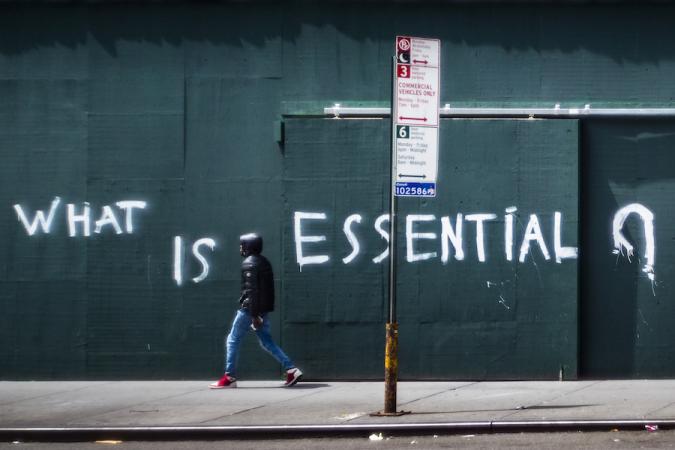
As we mark the one-year anniversary of the COVID pandemic arriving in New York City, we take a moment to look back at the transformative events of 2020. It's our mission to capture and document how New Yorkers have responded to the challenges of our times, be they 100 years ago or today. Over the next 12 days, we’ll share with you some words, images, and music of New Yorkers responding to the crises of the past year -- not only the virus, but also racial injustice, and economic upheaval.
We begin with quintessential New Yorker and jazz icon Wynton Marsalis performing a movement of his new piece, Democracy Suite, in an empty Rose Hall. As the digital vigil continues, we’ll hear from the curators and from the jurors from so many walks of life who helped to tell the story through the eyes, words, and lenses of hundreds of New Yorkers, preserving these stories for future generations.
This tribute to New York and New Yorkers invites all of us to explore and to reflect with us on all that we have lost, all that we have experienced, all that we have learned, and to explore the way forward together.
Share your thoughts and experiences with us at @MuseumofCityNY, explore the online exhibition, and visit us at 1220 Fifth Avenue.
The Digital Vigil Continues
From March 2–13, the curators and jurors who worked to select the images and objects for the exhibition New York Responds reflect on these works and the transformative events of 2020.
Day 2, March 2, 2021
Juror Rick Chavolla shares his thoughts on Nina Westervelt’s photograph:
"Our New York City is so much about neighborhoods and close community ties and coming to each other's support, which is contrary to some common perceptions people outside the city hold. We live in the West Village, only blocks from Lenox Health and at 7pm every night gave our most heartfelt thanks to all the workers who served the people so selflessly. We shared our prayers as we shared in sorrow over the mutual loss of friends and neighbors. We shared everything we could when loved ones passed to the next world as we shared the understanding that the nurses and doctors were experiencing this tragedy intimately every hour of every day. We can feel the embrace of these nurses and hope we can find ways to return the embrace to these professionals, who are still not valued as they should be."
|
|
Day 3, March 3, 2021
Juror Sarah Thankam Mathews responds:
"Two million New Yorkers were food insecure by the fall of 2020. "Food insecure" is a fluorescently technical phrase, obscuring the declaration beneath it: "I am hungry, my child is hungry; we don't know when that will change." The City of New York allocated $25 million to fighting this pandemic-driven lack, and its resourcing took many forms, including meals like this one, available for pickup at schools. Brook Garrison's photograph caught at my heart. It captures so much, the textures of pandemic parenting, the paucity of the meals most adults and children were offered, the valiant attempt at sourdough baking in vogue at the time, the precarity so many of us found ourselves in.
People need groceries, not simply meals; people deserve culturally resonant and nutritious food, not an endless series of school lunches, the contents of which are determined more by the interests of agribusiness than the welfare of any child who eats. When organizing Bed-Stuy Strong's mutual aid work, it became apparent very quickly how vast and unmet community need around food was, and how precarious and inequitable our systems of provisioning it long before 2020.
The lack documented in this picture also had its own community response. From the Bronx to Bed-Stuy, mutual aid groups organized by ordinary people committed to caring for each other attempted to step into the work of fighting community hunger, centering food sovereignty and human dignity. Queens Mutual Aid distributed masoor dal, rice, and a wide range of produce and spices to community members during Ramadan. At Bed-Stuy Strong, we partnered with Brooklyn Packers, a Black-owned worker coop, to deliver a week of groceries that helped feed over 20,000 Brooklynites. We keep us safe; we keep us cared for, organizers said again and again, leaving out the unspoken, no one else will.
This will not be the last pandemic we live through. What we do now to prepare for the next breakdown, the next economic depression, the next crisis matters profoundly. Our food systems and culture are broken and unsustainable. Again: this is a photograph that captures what the most powerful city in the wealthiest nation in the world was able to offer its people as security and nourishment. May our rage at this be rocket fuel for an altered, equitable future."
|
|
Day 4, March 4, 2021
Juror Kurt Boone reflects on Ruben Natal-San Miguel's image:
"I felt the photograph of the message "BE WELL" on marquee of the Apollo Theater, a New York City landmark, had an impactful meaning in a number of ways that reflects the COVID-19 crisis in New York City. At the direction of the mayor, governor and health officials, the city theaters were closed to all entertainment. Secondly, there is a life-and-death health crisis covering the whole city: pushing the message for all the people passing the theater to "BE WELL."
|
|
Day 5, March 5, 2021
Juror Cheryl Cohen Effron shares her thoughts on Erica Lasner's photo:
"The photograph of the health care workers watching the BLM protests through the glass sums up for me the many facets of the COVID crisis: an exhausted, but optimistic health care system, glory and humanity of frontline workers, the absence of street life as we know it, but those streets as a canvas for protests; the centrality and yet the anachronism of traditional policing as exemplified by the sirens of the police car seen in reverse in the reflection, and, perhaps most significantly, the way in which all of us for months and months watched the world through a pane of glass. "
|
|
Day 6, March 6, 2021
Juror Amanda Johnson reflects on Niel Kramer's image:
"In March 2020, I had just returned from Houston, TX having curated a small exhibition with members of my cohort. We were ecstatic about the success of our show and hard work. I felt inspired again to make art, connect with members of the art community outside of my circle, and forge a future for myself. These things felt possible. Upon visiting New York Responds at the Museum of the City of New York at the end of 2020, I found myself called back to the early days of quarantine. The photograph "Quarantine in Queens, Day 119" by Neil Kramer reminded me of the deep isolation that followed such a pivotal trip. For an undefined and unknowable amount of time, we were meant to separate ourselves from the people that grounded us, family, friends, or a stranger we passed on the streets.
Every aspect of our social lives as we knew it came to an abrupt halt. From one day to the next, I was commuting to Union Square from the Bronx on the 6 train, walking around Greenwich Village, attending classes, visiting museums, enjoying conversations and Belgian beer at a bar near the school to staring at a computer screen for 6+ hours a day. As I stared at "Quarantine in Queens, Day 119" when New York Responds opened and even now looking at the image I relive the days when I sat in bed in my apartment alone unsure of what to do next and finding solace as I looked out the window of my apartment watching the world turn around me. In those moments, everything seemed quieter and slower, the birds chirping and essential workers walking. I sat in my window and watched the world turn, day in and day out, and there wasn’t anything to see."
|
|
Day 7, March 7, 2021
The Museum's Andrew W. Mellon Foundation Post-Doctoral Curatorial Fellow Monxo López responds:
"My favorite TV show is looking out the window. In New York City many windows are a first-rate drama or comedy or both. Most human beings would be neurologically overwhelmed by a window scene which for New Yorkers is normal. In this photo the show has stopped; it breaks my heart. Looking out the window and seeing nothing happen, seeing no people, no activity, no one jaywalking; it is eerie and a bit traumatic. It brings me back to the new show we all had to sit through for very long weeks: nobody is out there, nothing is happening in the street, no hustling, no joking, no playing, no music. The isolation was intense; so much death and not being able to be together. We all deal with death all the time, but none of us was ready for that type of isolation. I cannot see the face of the woman on the photo, but I think she is crying."
|
|
Day 8, March 8, 2021
Museum staff member Maria Teresa Rico shares her thoughts on Amador's image:
"The painted plywood with the words “esperanza” and “hope” caught my attention. I don’t have to tell you we’ve had a difficult year. More than anything, hope is what we need in this moment. Hope and confidence that this will pass and everything will get better. While we saw a lot of bad things happen, we also saw people trying their best to help and support one another despite all of this conflict. This piece reminds me of the good despite the hard times."
|
|
Day 9, March 9, 2021
Museum staff member Dennis Diaz reflects on the objects in New York Responds:
"It’s tough to choose just one piece. I love sports so the painted plywood of Colin Kaepernick resonated with me. But, I think the plinth with all of the masks had the biggest impact on me. I’ve lost 33 friends and family members to COVID-19. My cousin’s grandmother got sick in March 2020, early in the pandemic. If we had known then how important it was to wear a mask, things could have been different.
I appreciate that this show considers what has happened to people of color. We were left out. We took the biggest hit out of everyone else and we were left in the dark. It needs to be known. Over the weekend, a group of Boy Scouts visited the gallery. The kids were asking a lot of questions, where did the virus come from? Are cops good or bad? It’s important to be a place for people to understand the impact the pandemic has had."
|
|
Day 10, March 10, 2021
Juror Rohit Aggarwala shares his thoughts on this image:
"One item from the New York Responds exhibition that resonates especially with me is "Absolutely Essential Eyes," a photograph of a bus driver on 79th Street, in Manhattan. More than one hundred MTA workers died of COVID in 2020, and the work of all MTA staff was so important to keep the rest of the city – hospitals, grocery stores, warehouses, care workers, and more – at work and providing their essential services. The driver's smiling eyes and gesture of strength show an admirable combination of courage, determination, and good will, reflecting New York City at its best."
|
|
Day 11, March 11, 2021
The Museum's Associate Registrar Madeline Hazelwood responds to Karen Zusman's image:
"I was struck by this image from the very beginning stages of developing New York Responds. To me, it speaks to finding the small moments of joy in an otherwise anxious and traumatic time and the time lost or gained with family.
Going to the beach during the summer has always been a ritual for me. That feeling experienced when riding the train home at the end of a long day, exhaustion settling into your limbs, the skin across nose and shoulders tight and just a little red from their time in the sun, your toes gritty with sand, your beach bag lighter from all the snacks doled out to friends and towel-lounging neighbors – it's a shared feeling for many New Yorkers and one that was missed greatly during the summer of 2020.
The love that father and son hold for each other is so clear in this image and I longed for that physical re-connection with my own family, thousands of miles away in their own isolation. It reminds me of my own days at the beach as a child, floating gently on the salt water, always assured that a loved ones' hands were within reach."
Day 12, March 12, 2021
Chie Miyajim, Digital Producer at the Museum refects on Arlene Schulman's image:
"Witnessing the controversy over mask mandates in the time of a historical pandemic has been a real American experience for me. In my home country of Japan, we have been wearing masks for ages, to protect each other even from a common cold, and nobody challenges the reasons behind it.
But here, at the same time, masks have become a way to be creative and to express ourselves in the socially distanced time. This is new to me and I love it. We have experienced a severe shortage of PPE, and washing reusable masks is now part of our lives.
It is an extra chore, but I believe it will make a big difference if we keep wearing our masks. I chose this image hoping everyone stays safe."
Day 13, March 13, 2021
The Museum's Andrew W. Mellon Foundation Post-Doctoral Curatorial Fellow Azra Dawood responds:
"I think of street food as a vital ingredient of urban life. In New York, the distinctive metal pushcarts and the vendors who tend them occupy – it seems – most corners. Or at least they did in the “pre-days.” I am not personally familiar with the vendor(just barely visible on the right) or the street corner pictured in this particular photo, but the image is emblematic of the larger culture and economy of street carts. At the same time, judging by the photographer’s note, it speaks of a particular community - Muslims in Coney Island.
BREAK FAST - it can sound like a misspelling of breakfast, a gap left by mistake between K and F. But instead, the sign is referring to the act of eating at the end of a long day of fasting in Ramzan/Ramadan. Fasting – and the traditions around it – are frequently characterized by communal prayer, special foods, and vibrant gatherings, but the sign tells us that last year mosques were no longer offering iftar meals, so the cart appears to have been repurposed for this work, distributing halal hot dogs, lamb chops with rice, falafel over rice and other foods. A sign at the bottom left tells us that the cart is dedicated to the memory of a woman – Mahmooda Shaheen – and all those who were lost to COVID-19. To me, the image speaks of the sacrifices that so many people made to curb the virus, changing the way that traditions are generally observed and temporarily closing important communal spaces such as mosques. It also speaks of the lives and livelihoods threatened.
According to data released last year, one-third to one-half of all restaurants in New York City were threatened with closure. This data probably did not cover street carts, but vendors are facing their own problems. According to reports, NYC has approximately 20,000 street food vendors - most of them immigrants. Licenses are hard to come by and many vendors face ticketing summons. The pandemic has worsened the situation. A bill, passed in January, could solve the problem by increasing the number of available legal permits and thus enabling more vendors to qualify for federal aid in times of crises."
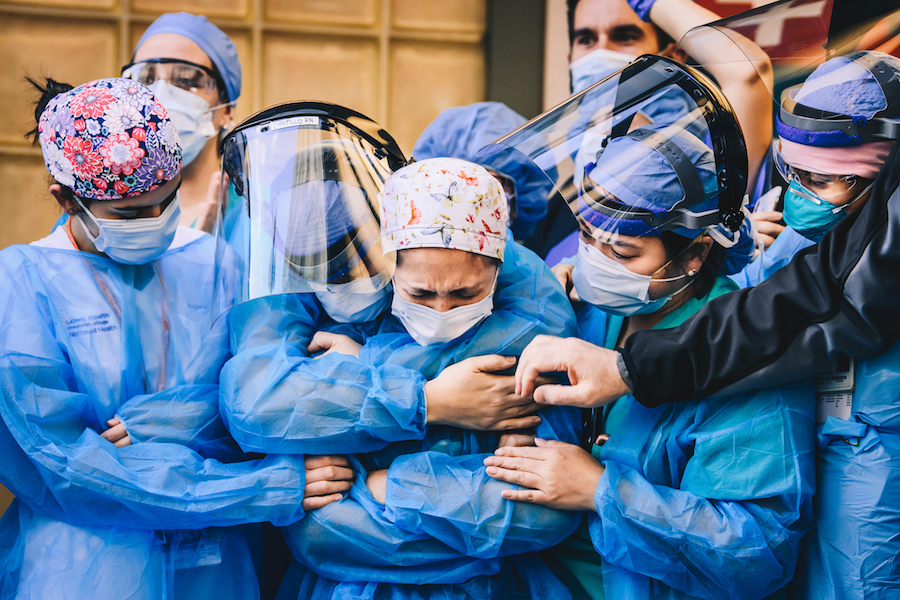
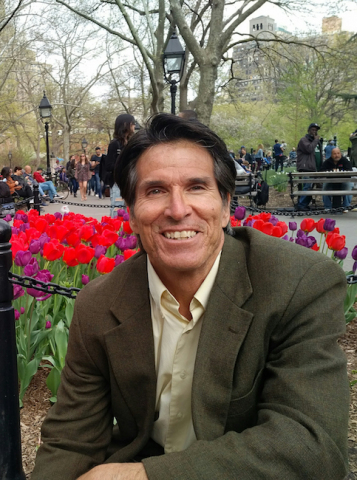
![Exhibitions_NYResponds_Plinth1_Image3 [A meal from the local school and a loaf of sourdough bread]](/sites/default/files/Plinth%2001_372.jpeg)
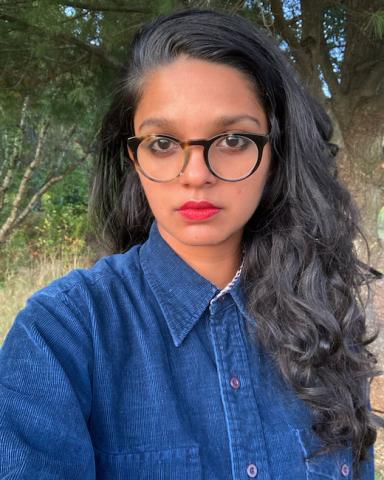
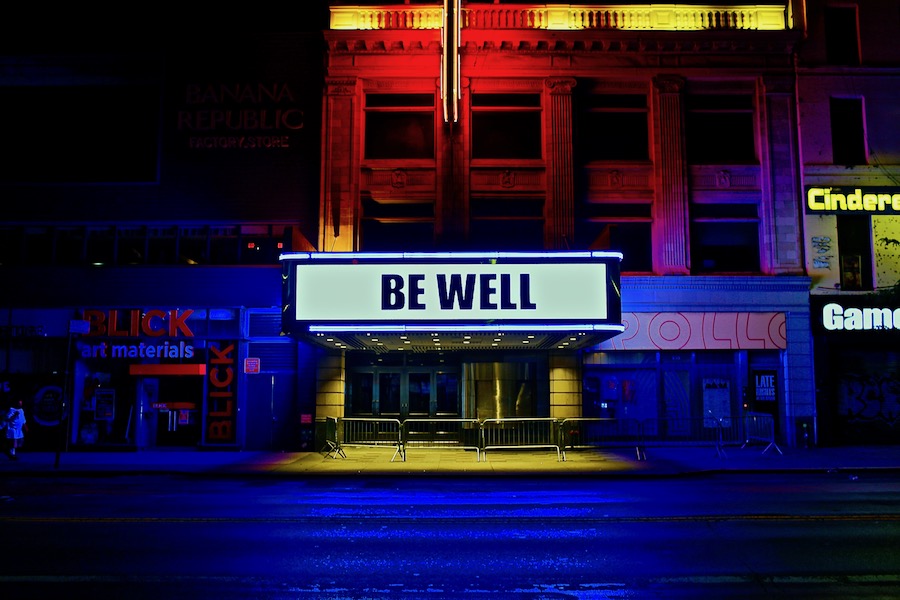
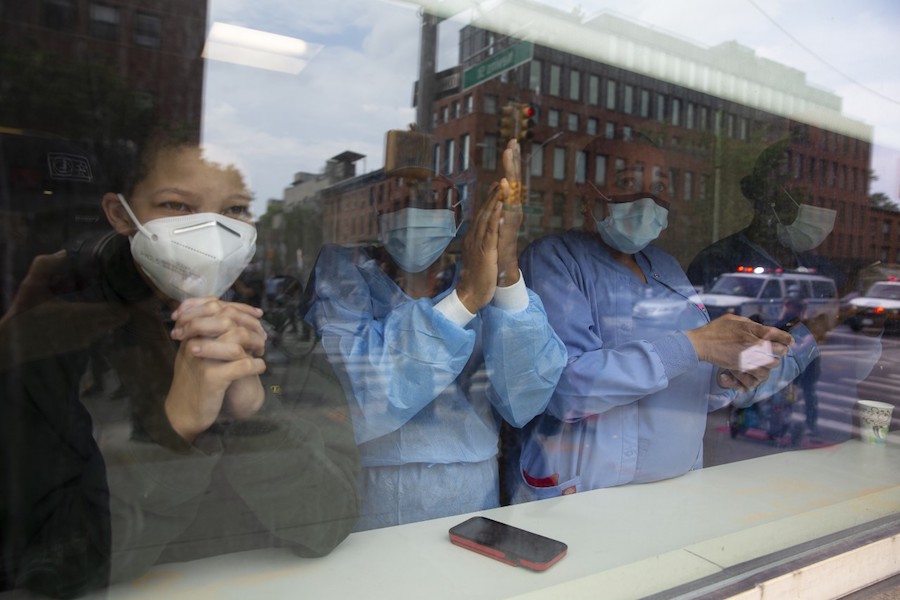
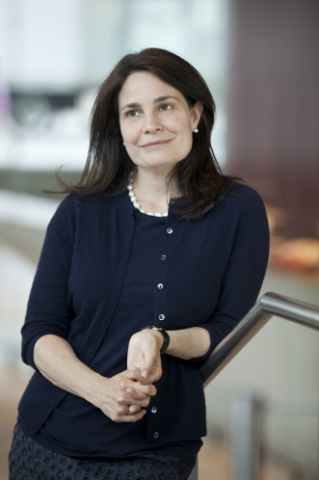
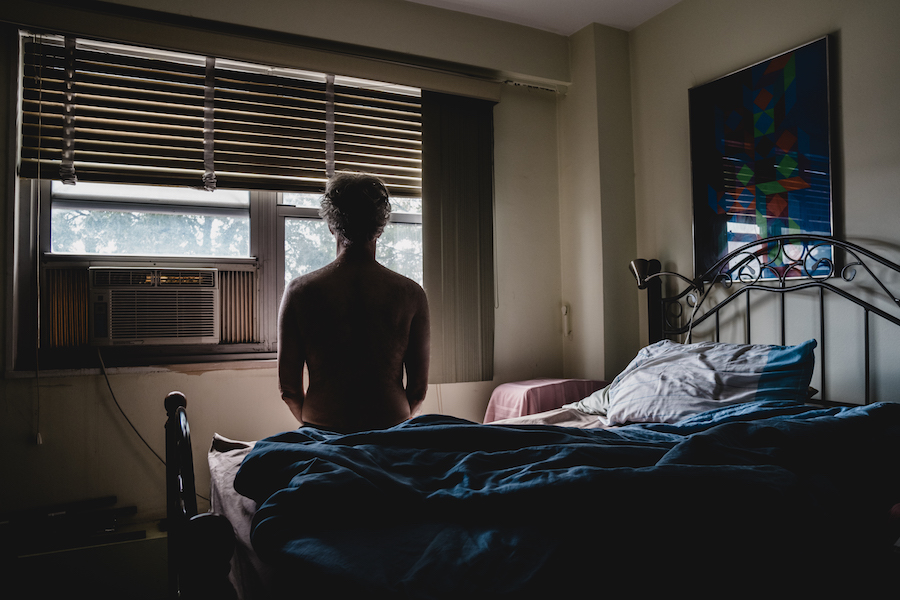
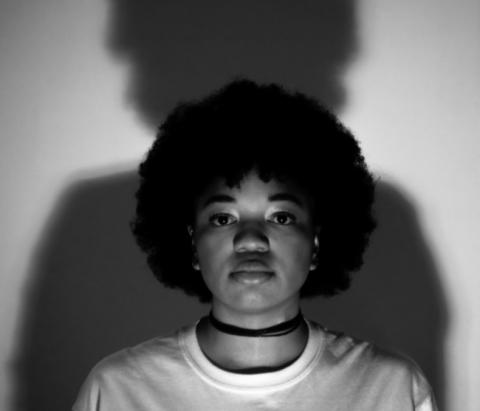
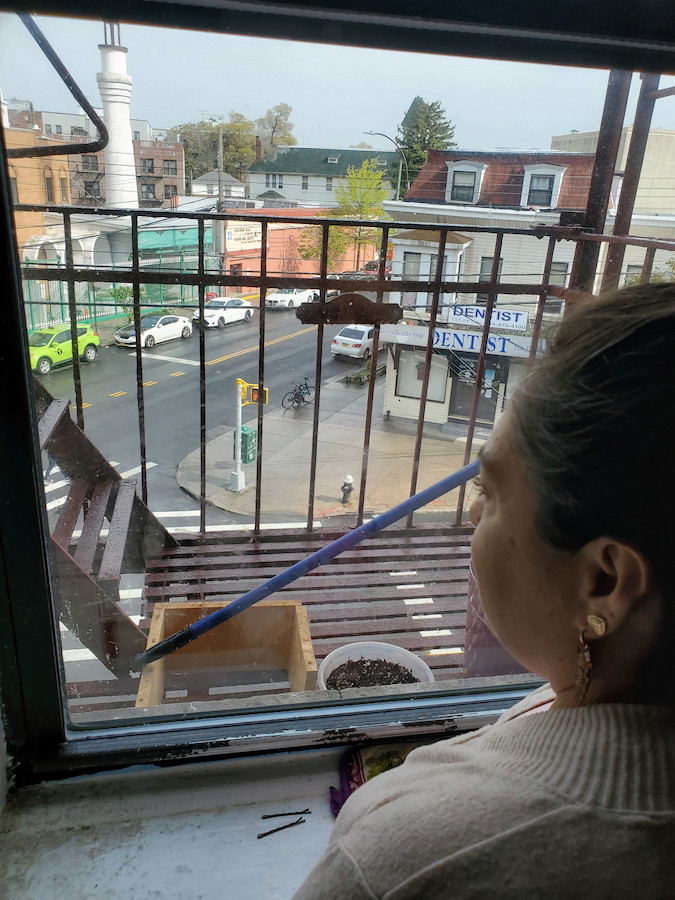
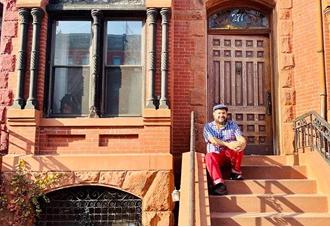
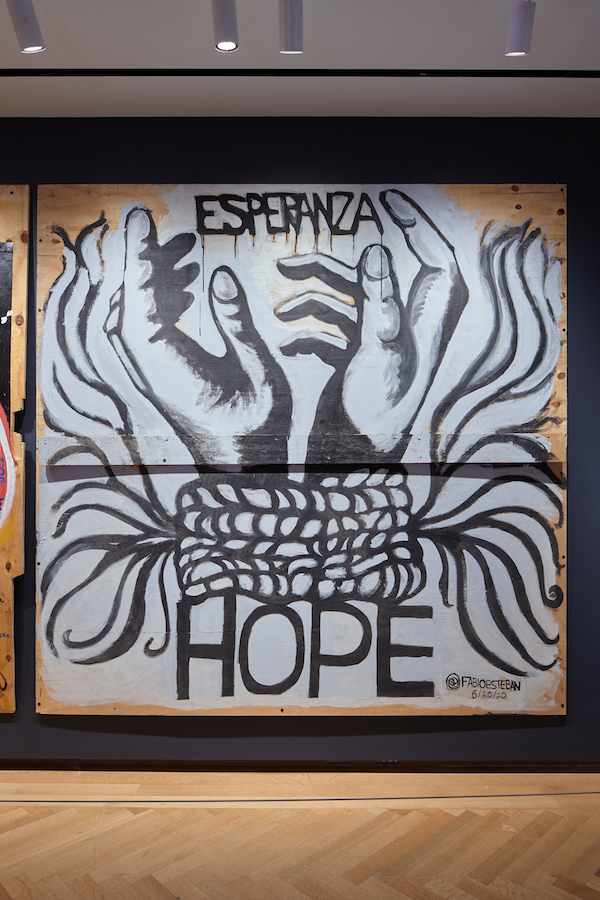
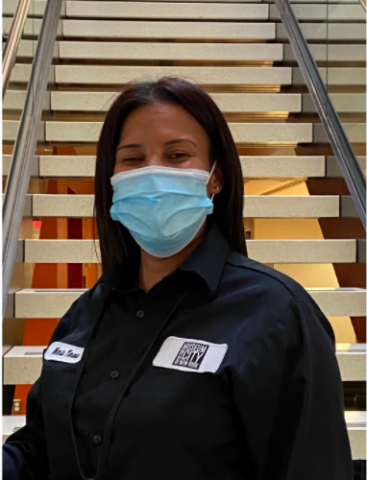
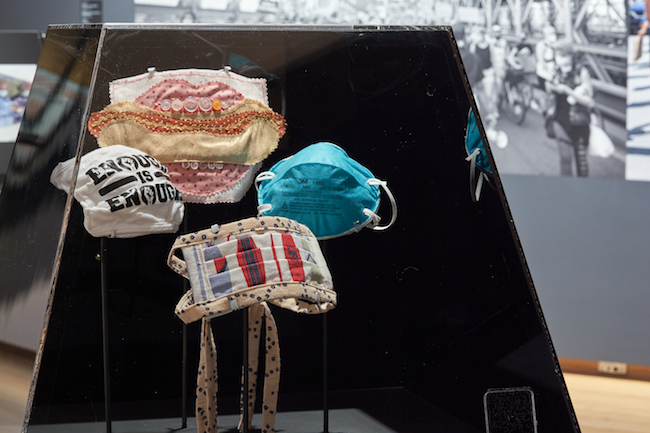
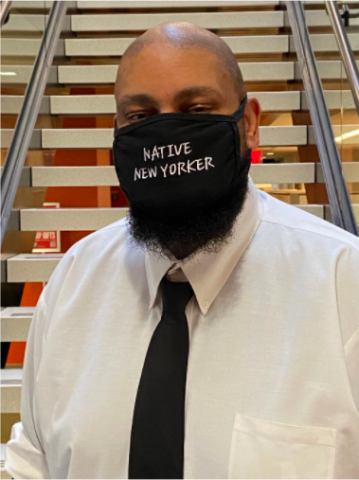
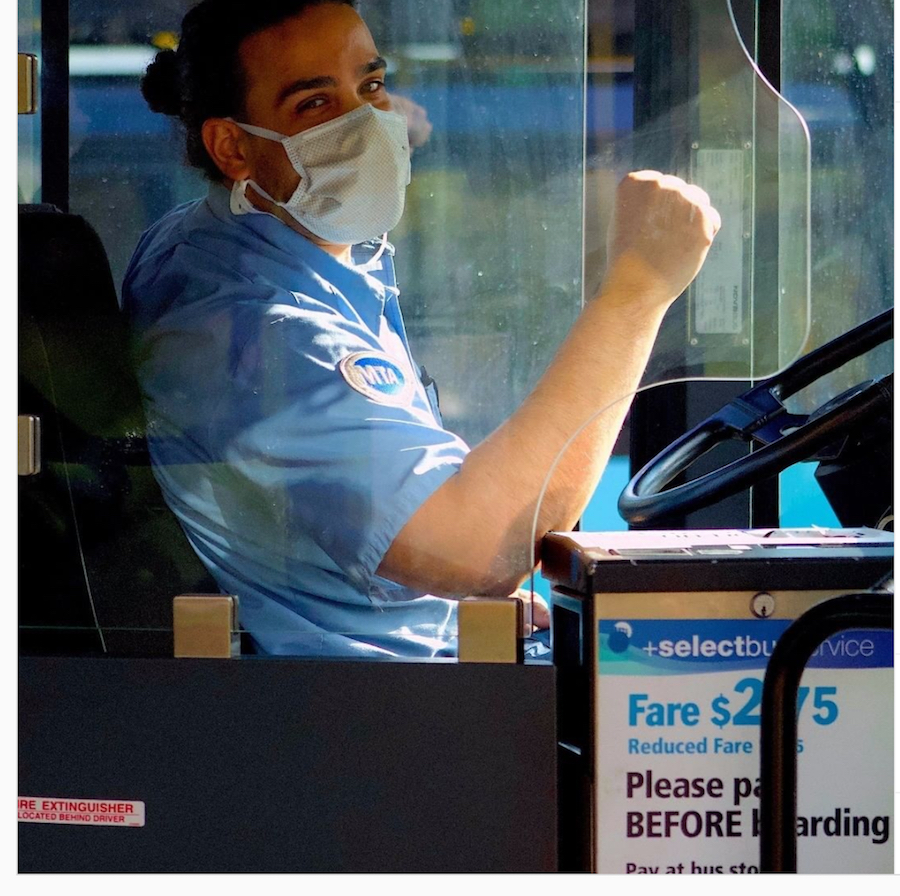
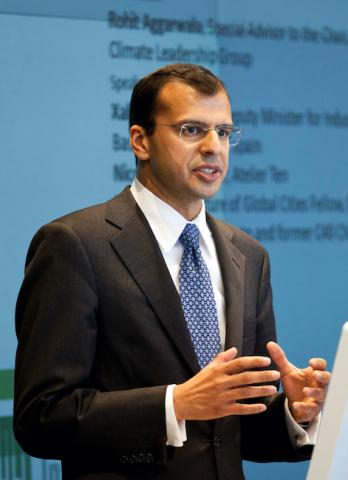
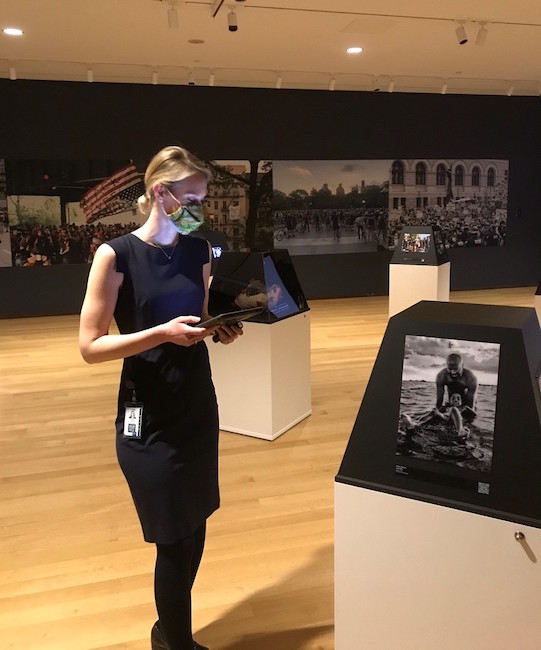
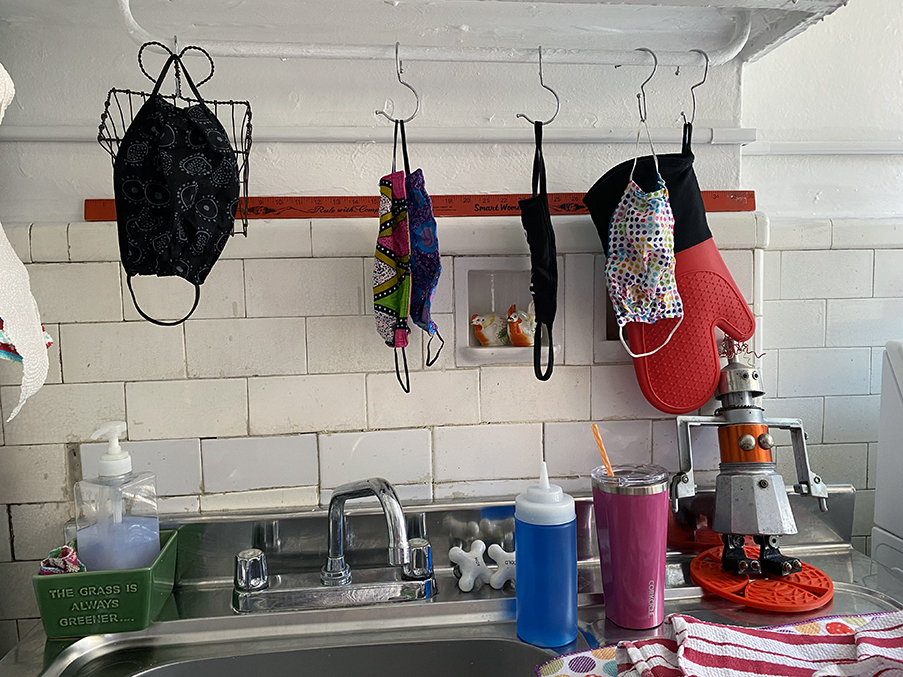
![Exhibitions_NYResponds_Plinth1_Image5 [A food truck offering free Iftaar meals since mosques were closed due to COVID]](/sites/default/files/Plinth%2001_44.jpeg)

